Kia e-Niro road test review
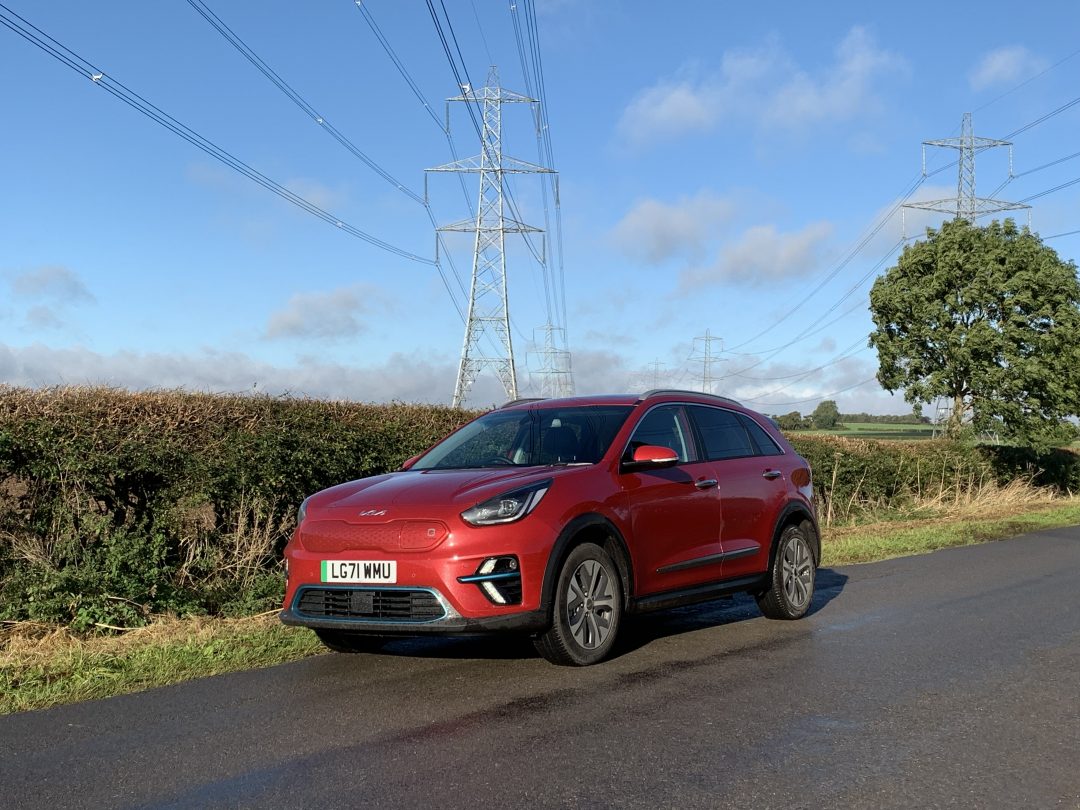
Kia e-Niro road test review: Electric cars might be the only choice we will have in a few years’ time, but what are they like to live with now? DAVID HOOPER has been finding out.
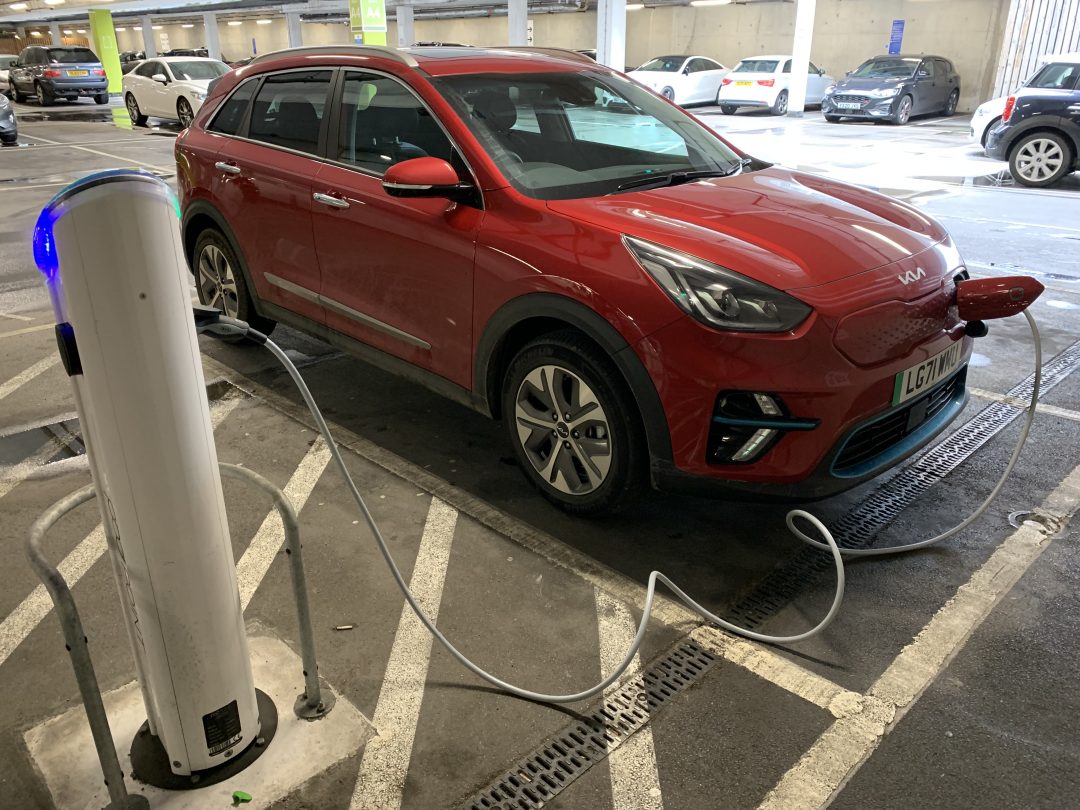
ELECTRIC cars are the future we are being told, and by 2030, if you buy a new car, it will have to be electric as the Government ban on the sale of petrol or diesel engines comes into force.
The uptake on electric cars so far has been slow, and they still only account for a small percentage of overall sales, but that percentage is growing, so what are the latest offerings like to live with and to drive?
This Kia e-Niro is one of the newest models on the market and comes with a 64 kWh battery. I was impressed with the car itself, which is equipped with all the bells and whistles, and is surprisingly engaging to drive – if you think electric cars are slow, or boring, think again.
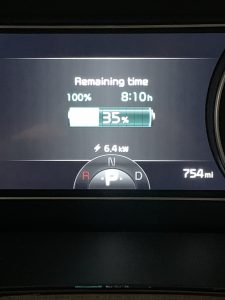
What I am less impressed with however, is the public charging infrastructure which needs massive investment and regulation if we are to get anywhere near achieving the Government’s ambitions within the quoted eight year timescale, but that’s literally, another story. Click this link to find out more about living with an electric vehicle.
Our Kia test car, which costs £39,645 on the road, arrived with just over 200-miles of battery range, which was enough for a couple of days’ motoring. Press the start button and the dash lights up as you would expect, and everything looks normal, except there’s no engine sound – and that still takes a bit of getting used to.
Listen carefully, and an electric car sounds a bit like a London underground train as it whirs into life and moves away. Once on the move it is more or less the same to drive as any automatic car, except with an electric motor, there are no gears, so progress is very smooth.
The faster you drive, the quicker you deplete your battery and the sooner you have to recharge it.
If you own an electric vehicle, you will have a proper charging unit installed at your home, which will recharge your car in a few hours. I don’t, so I had to plug it into a normal 13 amp socket. When I plugged the car in, it had 30% of its range left, and the dashboard told me it would take 23 hours to fully charge it. I left it plugged in for 10 hours overnight, by which time it was 66% charged, so the battery charge had increased by 28%.
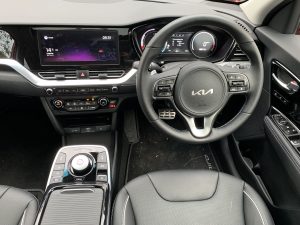
There are even electric car friendly tariffs available now which provide cheaper electricity in the wee small hours, and you can program your car to charge at the optimum time. So for four or five quid, you can have a range of around 230 miles, depending on how you drive it.
If you need to go further than that in a day, you will have to find a charger. Access to these usually involves signing up to an app and paying on your credit card, although some supermarkets are still offering free chargers. These are slow, but will top up your battery while you go shopping – assuming you can find one that isn’t already taken by another electric vehicle, or is actually working!
Back to the e-Niro. It’s well put together – the quality of the Kia range has improved massively over the last few years and now stands comparison to just about anything on the market. Our “4+” model was impressively well equipped too, with radar cruise control, reversing cameras, climate control, automatic headlights and even heated seats and an electrically heated steering wheel. All very nice, but with an electric car you’re always aware that you are using precious battery power.
On the road, the e-Niro drives very well. Anyone who has experienced an electric car will know the acceleration can be very brisk – the benchmark 0-62mph sprint can be achieved in a hot-hatch rivalling 7.8 seconds! It was surprisingly good dynamically too. You can feel the weight of the batteries in as much as the car feels heavier, but the low centre of gravity benefits its handling, and the overall driving experience is very good, and can even be enjoyable! But then, it does have the equivalent of 201bhp to call upon.
It even has flappy paddles – yes, that’s right, on an electric car, with no gearbox. The flappy paddles increase or decrease the amount of energy regeneration which puts charge back into the battery, which all helps to extend the car’s usable range. For example, on a long downhill run, you can increase the amount of energy the motor puts back into the battery, it’s similar “engine braking”, but you capture that energy. With practice, and a bit of reading of the road and planning well ahead, you can drive the car by using just the accelerator and the flappy paddles, without the need to touch the brake pedal at all. It’s good fun and quite a challenge which requires concentration, but can save you valuable miles of electricity.
Electric cars are definitely getting there. If you drive less than 200 miles a day, and keep your car topped up at home, then they are easy to live with and every bit as good as a conventionally powered equivalent model, but if you regularly drive big miles and are pressured for time, then personally, I’d steer well clear for the time being until the national charging infrastructure is much bigger and more reliable.
Rating: 




If you like this, read our look at what it’s really like to live with electric cars.
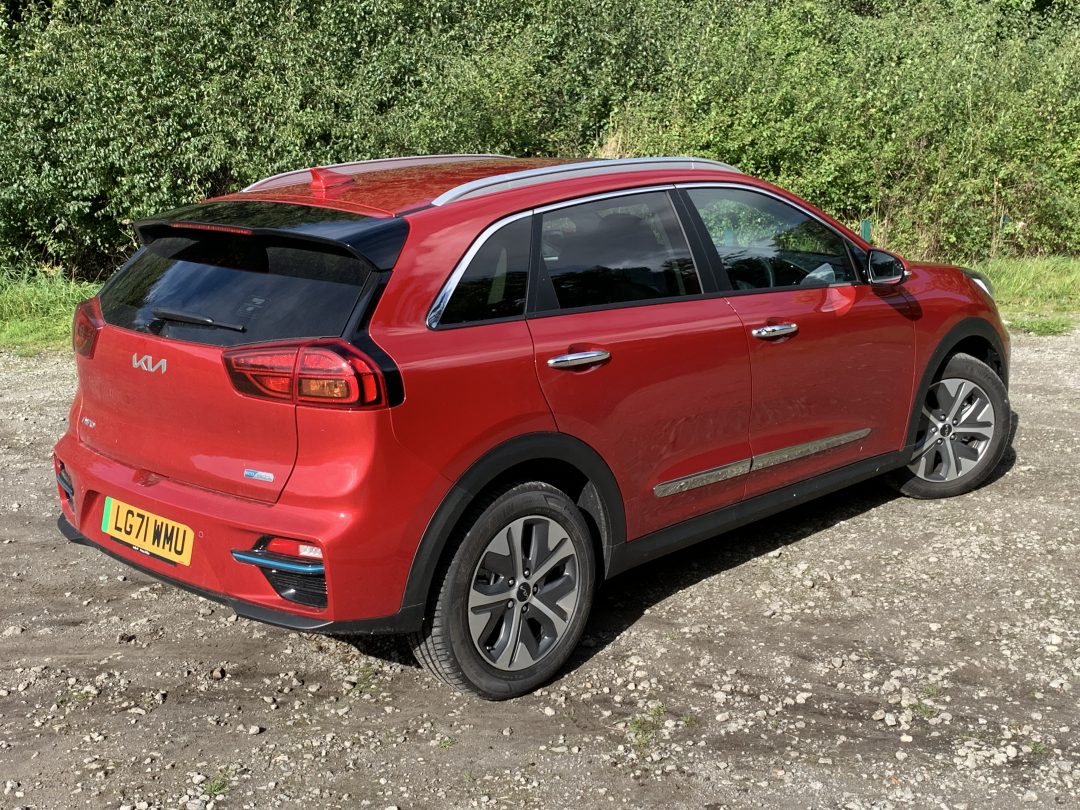
THE VITAL STATISTICS
MODEL: Kia e-Niro 64 kWh auto
ENGINE: 64kWh Li-ion polymer battery driving front wheels through an automatic gearbox.
PERFORMANCE: Top speed 104 mph. 0-62mph in 7.8 secs.
ECONOMY: City range: 382 miles.
Combined range: 282 miles.
CHARGING TIME
AC charge time (230V) 29 hours (0-100%)
AC charge time (7.2kW) 9 hours 35 minutes (0-100%)
DC charge time (50kW) 1 hour 15 minutes (0-80%)
DC charge time (100kW) 54 minutes (0-80%)
CO2 EMISSIONS: 0g/km.
FUEL TANK: N/A litres.
INSURANCE: Group 27
PRICE: £39,645
WARRANTY: 7 years/100,000 miles
WEBSITE: www.kia.com
• All data correct at time of publication.
